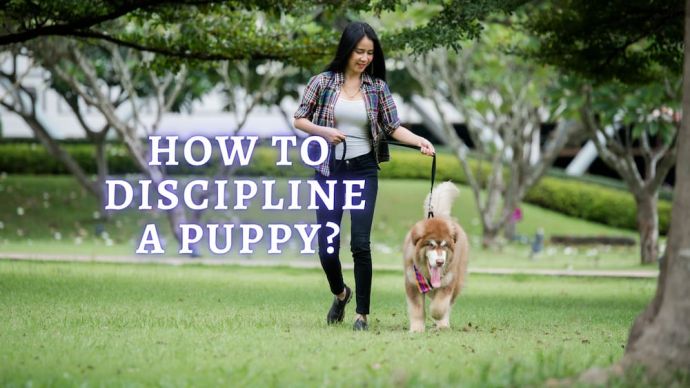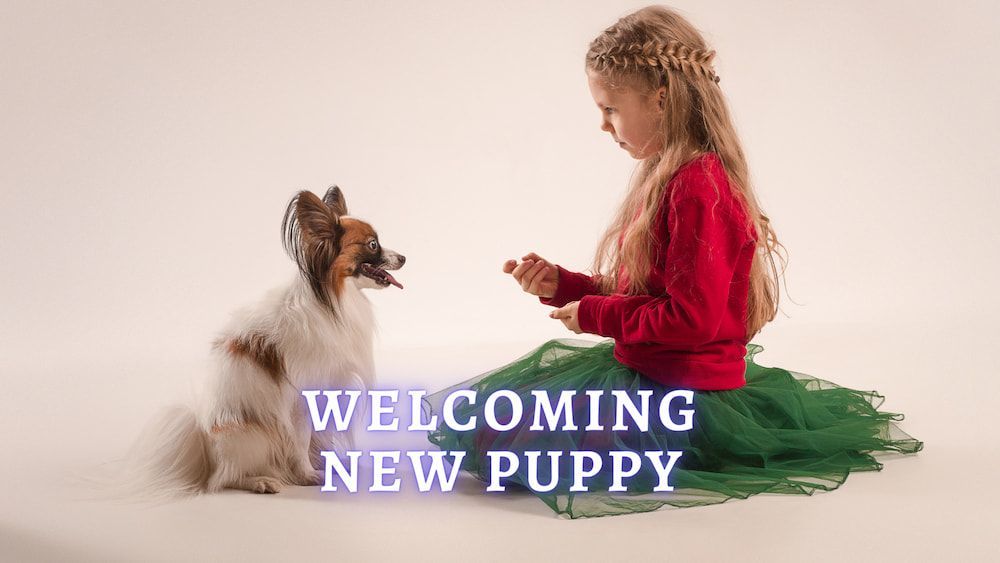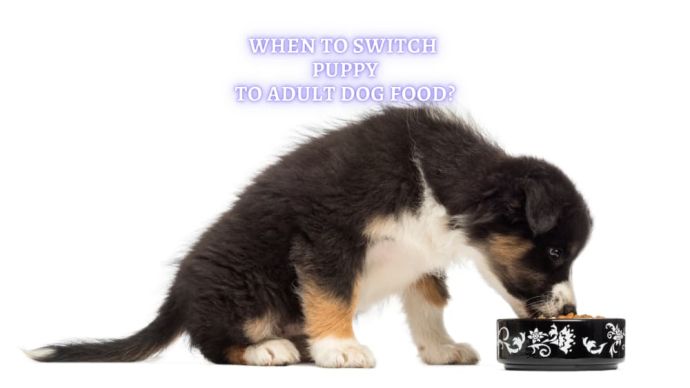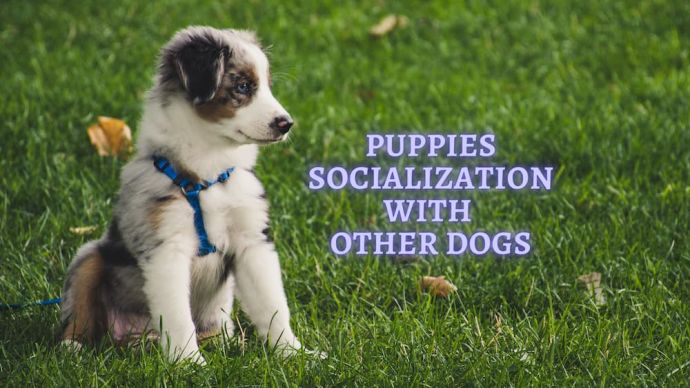Preparing for a Dog Meeting? 8 Tips to Welcome Your Pup Home
Written by:
Author: Vicki Smirnova
Vicki Smirnova is a professional writer and editor who adores animals and helps readers get along well with their pets. She has been working in digital media for more than 5 years and has great experience writing content about lifestyle, including pets. Vicki specializes in dog health and nutrition, cat feeding, dog training. She is an aquarium lover and is passionate to write about fish care at home. Also, Vicki headed several websites and worked as a news editor.
View all 245 articlesLearn about our editorial process and veterinary review board.
Viewed: 78
Updated on: 01/10/2023
It’s so exciting to daydream about life with your new puppy! They’ll fill your home with joy when they finally arrive. But how do you welcome a new puppy home? Will your house provide the welcoming and safe environment they need? Check out these tips to welcome your pup home safely while protecting your belongings from potential damage.
1. Schedule Their First Vet Appointment
People typically welcome new puppies home when the dog is eight weeks old. They don’t have strong immune systems at that age, so they’ll need to check in with your local vet within 48 hours of arriving on your doorstep.
The vet will check for standard puppy health issues with a fecal test and physical examination. They’ll also begin administering essential puppy vaccinations [1] for deadly viruses like canine parvovirus and distemper. It will take nearly two months before your pup gets every vaccine dose they need to socialize safely, so keep them away from unknown dogs and dog parks while they wait for their final vaccine appointment.
2. Remove Any Choking Hazards
You won’t be able to remove everything your puppy will chew on. They’ll explore your home with their nose and teeth no matter what, but you can remove choking hazards before they come home. Small decor objects on low shelves, open containers on your floor, and even things like tissue boxes on side tables should go into temporary storage. When your puppy stops teething, they’ll become less likely to eat whatever’s in reach.
Remember that if you plan to welcome a new dog to another dog who already lives in your home, you should keep your dog’s toys out. Removing what’s familiar to your older dog could make them more on edge and even aggressive toward a puppy. Leave their favorite toys out so they feel comfortable and learn how to share.
3. Protect Your Floors
People don’t often think about their floors while they prepare to welcome a new puppy, but they play an essential role in your dog’s comfort. Puppies need traction to walk across floors without damaging them, so place a rug across your hardwood floor. The material will also shield your hardwood from potential scratches or stains caused by potty accidents.
Find a replaceable rug at a thrift store or flea market so you feel comfortable with any damage it might take while your puppy grows up. If you decide to throw it out after a few months of life with your puppy, you won’t have to worry about wasting a high-quality rug that feels like an investment.
4. Consider Learning Your Puppy’s New Tricks
Your new pup needs to learn basic tricks to communicate with you and stay safe. Consider which words you’ll teach them when they’ve had time to adjust to your house. Commands like “sit,” “stay,” and “come” could form their basic vocabulary.
It’s essential to welcome a new puppy home because you’ll use basic commands to stop them from engaging in potentially dangerous or unwanted situations. After they get the hang of the most important commands, you could teach them entertaining tricks like “shake” or “roll over” just for fun.
RELATED: Teaching Dog to Roll Over
5. Research Potential Pet Insurance
Puppies get into everything and explore the world with their nose, so they can get into accidents. Insurance will step in if they need their stomach pumped or other emergency procedures. It likely won’t cover their routine vaccinations because they’re preventive care, but it could significantly reduce surprise vet bills if accidents happen.
Compare quotes from leading pet insurance providers to find a plan that provides the coverage you want at a monthly premium you can afford. You never know when it will save the day in the future.
6. Create a Puppy Routine Chart
Grab a large piece of paper or open a new spreadsheet document. You can use them to track when your new puppy eats, has bathroom accidents or successfully relieves themselves outdoors. Puppies typically need to relieve themselves after playtime, meals, and hourly breaks, so it’s easy to forget when they last went out or what they did.
The first few days and weeks with a puppy can feel challenging because there’s no routine. Tracking these details creates a visual guide for when they use the bathroom most often. You’ll create the most helpful, effective routine based on the information after tracking your puppy’s activities for a while. In the meantime, remember to practice self-care activities to lower your own stress and stay calm when your days are hectic.
7. Invest in Stimulating Toys
Getting toys for your puppy that stimulate their growing mind will make your home a better place for them to grow up. It also makes welcoming a new dog to another dog easier. Neither will have claimed the new toys as their own, so there won’t be any growling over them.
Your puppy might like chewing on antlers due to their texture and endurance during your puppy’s teething phase [2] while they’re still less than a year old. They might also enjoy toys that hide treats, squeak, or crinkle. You’ll engage all of their senses to keep them entertained as they grow up.
8. Decide If You’ll Crate
Crating can be a controversial subject for dog owners. Some people think it’s the safest way to train your dog to behave while you’re sleeping or away from home. Others think crates keep dogs contained in spaces that are too small and scare them too much.
You’ll know if you should crate based on your routine and preferences. It can be an effective solution for anyone who works full-time away from home. Ensure the crate is big enough for your pup to lie down and stand up without being cramped. You can upgrade the crate as needed while they grow.
If you don’t want to crate, find a hallway you can close off and set up a baby gate across the entrance to keep your dog inside. They can rest on a dog bed and play with toys while you’re gone.
Anyone who will be away from home all day can also hire a dog nanny to check in on their pup while they’re at work. There are many ways to care for your new dog with or without a crate. Deciding what you prefer before they come home will establish a better routine immediately.
Prepare for Your Pup
Use these tips to welcome your pup home and prepare for them to meet any dogs you already have. You’ll protect your belongings, keep your pup safe, and create the safest, most loving environment for everyone under your roof.
Article Sources:
- “Vaccinations for Your Pet.” ASPCA, aspca.org/pet-care/general-pet-care/vaccinations-your-pet.
- Coates, Jennifer. When Do Puppies Lose Their Baby Teeth and Stop Teething? 1 Apr. 2016, petmd.com/dog/care/puppy-teeth-everything-you-need-know.
 Puppy Care How to Discipline a Puppy? Strategies to Teach Your Puppy Proper Behavior
Puppy Care How to Discipline a Puppy? Strategies to Teach Your Puppy Proper Behavior - 164
- 0
 Dog Veterinary Tips Why is my Dog throwing up: Causes and Preventing (Veterinary Advice)
Dog Veterinary Tips Why is my Dog throwing up: Causes and Preventing (Veterinary Advice) - 22464
- 5
 Dog Care Why Is My Dog Bleeding From Its Butt? Causes and treatment of rectal bleeding in the dog
Dog Care Why Is My Dog Bleeding From Its Butt? Causes and treatment of rectal bleeding in the dog - 18081
- 0
 Dog Care My Dog Keeps Scratching His Mouth: Reasons Why Your Dog Scratching Face
Dog Care My Dog Keeps Scratching His Mouth: Reasons Why Your Dog Scratching Face - 17474
- 1

























